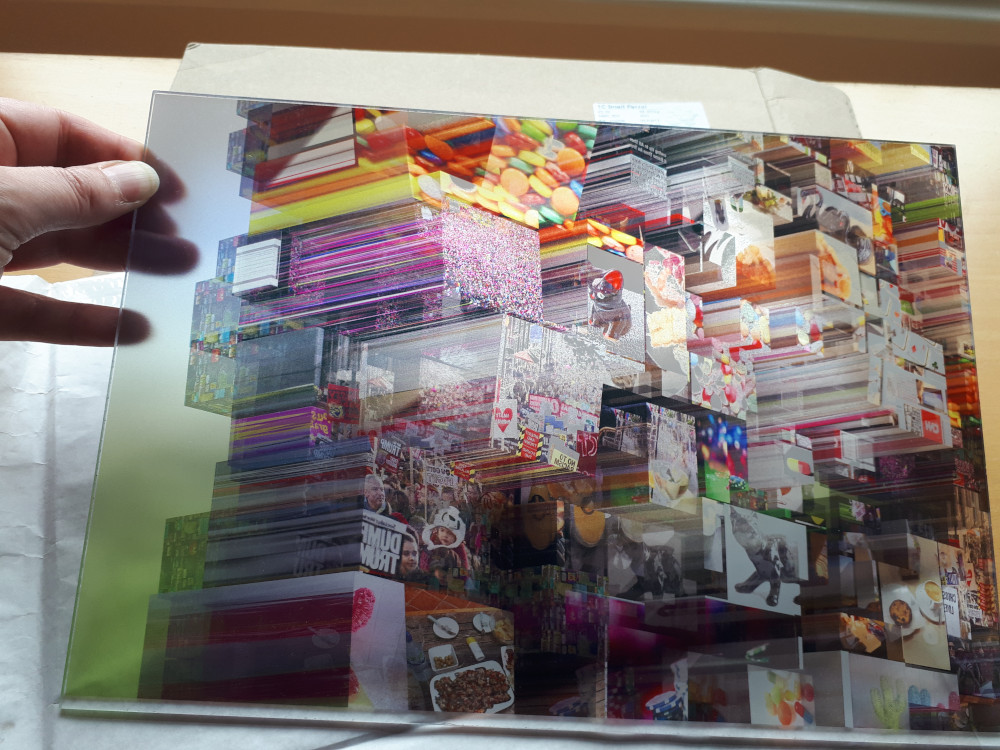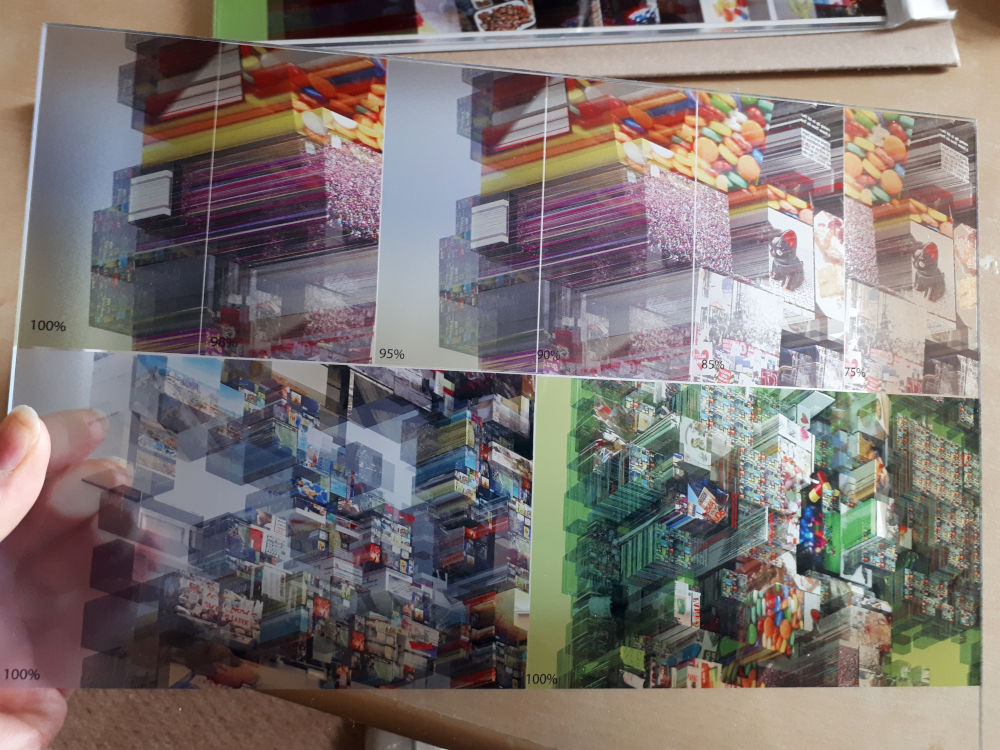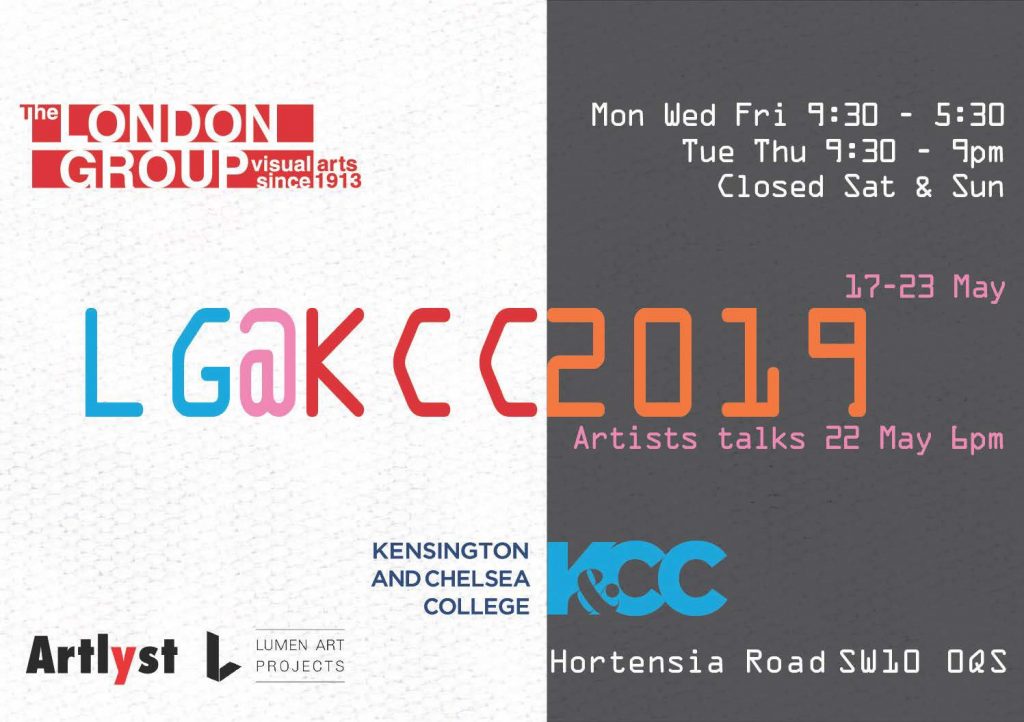April 17 2019//
This month I’ve been experimenting with test prints on acrylic for forthcoming London Group LG@KCC exhibition at Kensington & Chelsea College, Hortensia Road, London, May 2019. I will be showing a large image from recent Blender 3d Vertictecture series.
Images from Vertitecture series use complex 3d structures populated with visuals downloaded from online searches for disparate contemporary themes such as *fake news* *Ebay kitsch* *global protests*. They were also created using a combination of diffuse and transparent surface textures so I’m looking at how the resulting varied transparencies can work best with the clear acrylic media – The idea is to take the image off the screen to a medium that has screen-like qualities and exploits artificial light or daylight, and integrates that into the work.

The image will use a process called Direct to Media UV Printing.
Direct to Media UV Printing is a large format, full colour plus white, ultra-fine inkjet printing process which allows artwork to be printed directly on to virtually any flat surface up to 3m x 2m and up to 50mm in depth, or larger sizes using roll-to-roll printing, giving artists greater flexibility in the production of larger works. The nine colour channels are loaded with CMYK plus two light colours alongside white and a varnish and separate primer.
Ultra-fine droplets of ink are deposited directly on to the printing media which is then almost instantly cured, or dried by UV (ultraviolet) light. The specially developed ink droplets are bonded to the surface of your chosen media – giving you a smooth, stable, abrasion resistant and long-lasting image which is weather-resistant for up to five years.
Genesis Imaging, London
In the first test (above) I tried out various gradient masks in image editing software before printing in order to make selected areas more transparent. However, it turned out that the image files could be printed without editing and the full range of transparency variations reproduced perfectly as faithful to the original image (below)
From the test print results, I also noticed that there can be an interesting random unpredictability in that sometimes solid white areas of the image print as totally transparent, so I’m looking forward to seeing what happens when the full-scale print is completed.

The final print will be 85 cm x 85 cm x 1 cm acrylic and mounted away from the wall by using wall posts to give the appearance of a suspended image.

LG@KCC exhibiting artists include: Wendy Anderson, Clive Burton, Ece Clarke, Peter Clossick, Sandra Crisp, Tricia Gillman, Susan Haire, Alexandra Harley, Alexander Hinks, Gillian Ingham, Matthew Kolakowski, Graham Mileson, Kathleen Mullaniff, Eugene Palmer, Claire Parrish, Ian Parker, Sumi Perera, Alexander Ramsay, David Redfern, Tommy Seaward, Suzan Swale, Paul Tecklenberg, Bill Watson, Erika Winstone, David Wiseman.